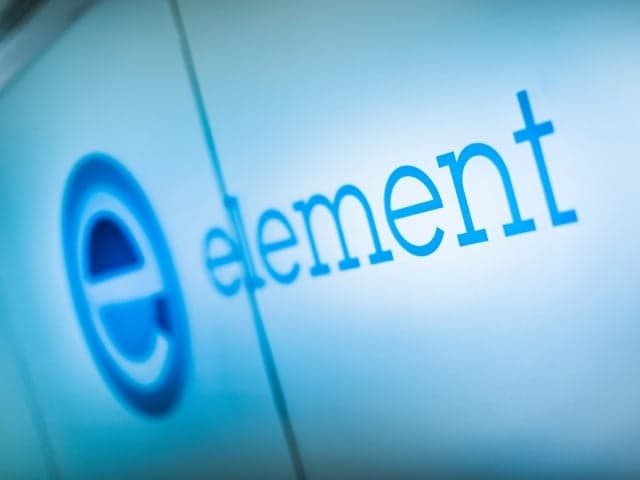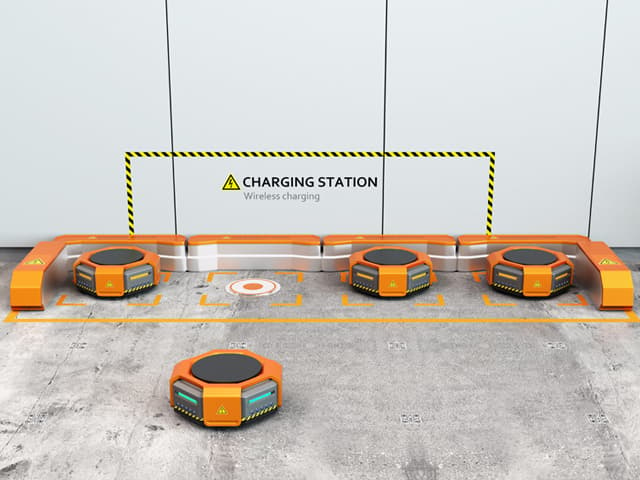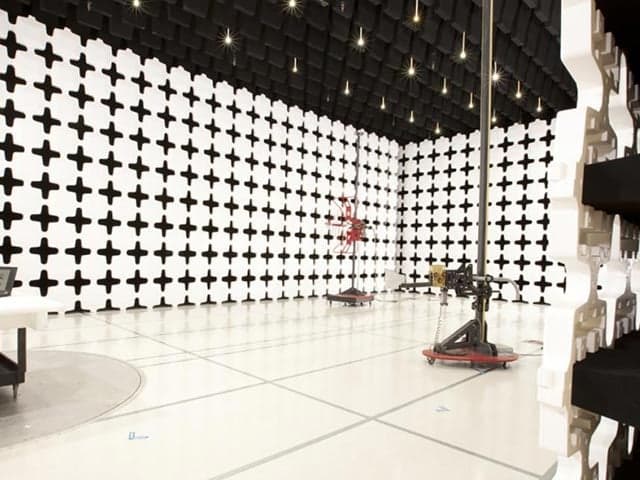Consumer Electronics Testing and Certification
Streamline your path to market with end-to-end advisory, testing and certification that ensures your consumer electronics meet global safety and performance standards. From household appliances to sophisticated wireless and cellular devices, Element's experts identify potential issues early in development, preventing costly redesigns and delays. We guide you through complex regulatory requirements while providing certification services recognized worldwide, simplifying your supplier base. Get to market faster with a trusted partner who understands both technical and compliance challenges.

What is Consumer Electronics Testing & Certification at Element?
Consumer electronics testing and certification involves assessing everyday products to verify they operate safely and effectively while meeting regulatory requirements before market entry.
At Element, we provide a one-stop-shop solution to help your products meet regulatory compliance from concept to certification. From EMC and Safety to Cybersecurity, we ensure product compliance with worldwide certifications including CE Mark, UKCA Mark, FCC, KC, RED, ISED, and NRTL. For products with radio and cellular connectivity, we provide testing for Bluetooth SIG, Wi-Fi, 5G, Matter, Zigbee, RF exposure, and much more. Our accredited testing is recognized by major regulatory bodies worldwide, accelerating your product's journey to market.

What Can Element Offer You For Consumer Electronics Testing and Certification?
Key Tests Offered
Key Tests Offered
At Element, we deliver all the critical testing services your consumer electronics need to satisfy regulatory requirements worldwide. Our comprehensive testing capabilities are designed to address both safety and performance aspects of your products while meeting regional and international standards, including:
- EMC testing
- Electrical Product Safety testing
- Radio and Wireless testing (Bluetooth SIG, Wi-Fi, 5G)
- Cellular testing
- Battery testing
- Product safety testing to the Low Voltage Directive (LVD)
- Human factors and usability testing for consumer devices
- Accuracy testing for non-medical applications in sports, aviation, VR, touchless tablets, and industrial applications
Products We Test
Products We Test
Your consumer electronics face rigorous safety and performance requirements before they can reach global markets. Element test a wide range of devices, from simple electrical products to sophisticated wireless-enabled technology, ensuring they meet all applicable standards. We provide a one-stop-shop service offering, covering EMC, product safety, radio performance and RF exposure assessments. Our expertise covers the full spectrum of consumer electronics, including:
- Computers and IT equipment with and without radio connectivity
- Induction cooking appliances with sophisticated microprocessors
- Utility meters with wireless capabilities
- Wearable technology with advanced electronics
- Wireless power charging (WPT) devices
- Household appliances containing safety-critical electronics
- Smart Technologies (Matter enabled)
- Consumer wellness devices and non-medical monitoring products
- Cellular devices and smart phones
Methods And Solutions Offered
Methods And Solutions Offered
You receive complete support throughout your product testing and certification journey. Our expert team evaluates your products early in development to identify potential issues, preventing costly redesigns and delays. We guide you through the entire conformity process, managing administrative requirements while you focus on innovation. Our approach helps you by:
- Evaluating products at the early development stage
- Identifying potential compliance issues before they delay market entry
- Providing advice on relevant standard requirements
- Guiding you through specific authorization routes (declaration of conformity or certification) based on your product type
- Saving time and reducing administrative costs
Global certification expertise
Your products require different certifications depending on your target markets. Our global network of local experts specialize in obtaining the necessary approvals for local, regional and international certification schemes, streamlining your international expansion through:
- IECEE CB Scheme certification
- CE Marking for Europe
- UKCA Marking for the United Kingdom
- FCC certification for North America
- ISED certification for Canada
- KC for Korea
- Nationally Recognized Test Laboratory (NRTL) for North America
- Radio Equipment Directive (RED) for Europe
- RCM mark for Australia and New Zealand
- VCCI for Japan
- Third-party certifications such as VDL certification for consumer wellness products
Which Labs Offer This Service
Which Labs Offer This Service
Our expert team operates from tech hubs across the world, providing global access to our expert capabilities. Find your nearest lab on our Locations Page.
Standards we test to and products we test
- EU's EMC Directive (EMCD)
- Low Voltage Directive (LVD)
- Radio Equipment Directive (RED)
- FCC Part 15 subpart B (USA)
- FCC radio parts (USA)
- ICES range (Canada)
- RSS range (Canada)
- North American product safety requirements
- CE Marking requirements (Europe)
- UKCA Marking requirements (UK)
- MIC standards (Japan)
- RRA requirements (Korea)
- PTCRB/CGF cellular standards
- Matter and Zigbee certification standards
- CISPR 32 and 35
- IECEE CB Scheme
- Japan Radio Law
- ISO 81060-2 for blood pressure monitor validation
- FDA Guidance Document - General Wellness: Policy for Low Risk Devices
Household and consumer appliances
- Induction cooking appliances
- Washing machines
- Household appliances with electronic components
- Products with safety-critical functions
- Electronics for various environments (household, commercial, industrial)
IT and communication devices
- Computers and laptops
- IT equipment (ITE) with and without radio connectivity
- Multimedia equipment (MME)
- Wearable technology
- Utility meters
- Measuring and monitoring instruments
Wireless-enabled technology
- Bluetooth devices
- Cellular products (including LTE)
- Near-field communications (NFC) equipment
- Wi-Fi enabled products
- Wireless power charging (WPT) devices
Consumer wellness products
- Wellness monitoring devices not intended for medical diagnosis
- Non-invasive health tracking products
- Personal health information collection devices
- Consumer blood pressure monitors eligible for VDL certification
- Health and fitness wearables for non-medical purposes
Your Challenges, Our Solutions
Complex global compliance
Market entry time pressures
Issues caught late, causing delays
Unclear certification process
Why Choose Element

Complete consumer electronics expertise
Globally recognized results
Wireless technology proficiency
Comprehensive compliance support
Frequently asked questions
What's the difference between a medical device and a consumer wellness device for testing purposes?
Consumer wellness devices collect and display general health information for personal use and aren't intended for medical diagnostic situations. According to FDA guidance, these products can't be invasive or implanted. Element provides testing to validate these devices' accuracy and support marketing claims while ensuring they don't step into regulated medical device territory. For these products, we offer standards-based testing like ISO 81060-2 for blood pressure monitors and usability testing to ensure safe consumer use.
What's the difference in testing required for products with and without radio connectivity?
Products without radio connectivity require EMC and product safety assessments to comply with the EU's EMC Directive and Low Voltage Directive, plus FCC Part 15 subpart B for the USA and Canada's ICES range. Products with radio connectivity need additional radio performance and RF exposure assessments to comply with the Radio Equipment Directive (RED), specific FCC radio parts, and Canada's RSS range.

Explore our global network of labs and find your nearest location
VIEW ALL LOCATIONSRelated services

Global Market Access (GMA) Services
Accelerate international product certification with Element's Global Market Access Services. Navigate complex regulations, reduce testing time & get to market faster.

Battery Testing Services
Accelerate your product launch with Element's battery testing services. Superior safety, compliance, and performance data, custom protocols & real-time results. Learn More.

Electrical Safety Testing and Certification Services
Accelerate your electrical product's journey to market with Element's comprehensive Electrical Safety Testing and Certification services. Navigate certification requirements efficiently, reducing time and costs while maintaining rigorous safety standards.

Wireless Device Testing & Certification
Get your wireless devices to market faster with Element's accredited testing services. Expert guidance through compliance, certification and global approvals for all wireless technologies.

MIC Certification for Japan Radio Law
Element provides MIC certification services for radio products entering the Japanese market. Our expertise simplifies compliance with Japan's Radio Law, ensuring smooth approval and faster market access.

RED Directive Testing for CE Marking
Element's Radio Equipment Directive (RED) services provide testing, certification, and expert guidance to help manufacturers meet EU compliance requirements and secure CE marking for wireless products.

FCC Testing and Certification
Element are an authorized TCB, providing FCC certification for radio equipment enabling it to be placed on the market in the United States. Expert testing, documentation & approval support.

ISED Certification for Canada
Get ISED certification faster with Element's end-to-end testing and certification services, documentation support, and FCB authorization for seamless Canadian market access.

Radio Frequency (RF) Testing & Certification Services
Accelerate time-to-market with Element's end-to-end RF testing and certification services. Our expert engineers ensure your wireless devices meet global regulations, prevent interference issues, and perform optimally.

Wireless Power Transmission (WPT) Testing Services
Expert Wireless Power Transmission testing to ensure your innovative charging solutions meet global EMC and RF safety standards. Get comprehensive compliance support for near-field and far-field WPT technologies.

Clinical Validation Testing
Element delivers comprehensive clinical validation testing for medical devices and wearables, managing study design, recruitment, testing, and data analysis. Our complete solutions help overcome regulatory challenges and accelerate product development.

Electromagnetic Compatibility (EMC) Testing & Electromagnetic Interference (EMI) Testing & Certification
Element provides accredited EMC and EMI testing and certification services, helping businesses meet regulatory requirements, reduce costly redesigns, and bring products to market faster through expert compliance support.
- Global Market Access (GMA) Services
- Battery Testing Services
- Electrical Safety Testing and Certification Services
- Wireless Device Testing & Certification
- MIC Certification for Japan Radio Law
- RED Directive Testing for CE Marking
- FCC Testing and Certification
- ISED Certification for Canada
- Radio Frequency (RF) Testing & Certification Services
- Wireless Power Transmission (WPT) Testing Services
- Clinical Validation Testing
- Electromagnetic Compatibility (EMC) Testing & Electromagnetic Interference (EMI) Testing & Certification
